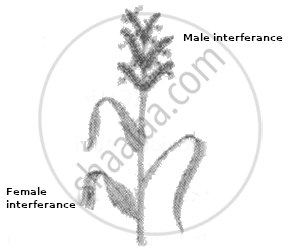Advertisements
Advertisements
प्रश्न
Differentiate between anemophily and entomophily.
उत्तर
| Sr. No. | Anemophily | Entomophily |
| 1. | Wind pollinated flowers. | Insect-pollinated flowers. |
| 2. | The size of the flowers is small. | The size of the flowers is large or present in groups to show a conspicuous appearance. |
| 3. | Not brightly coloured. | Brightly coloured. |
| 4. | Odourless. | Usually, odour/fragrance is present. |
| 5. | Nectar is not produced. | Nectar or edible pollen is usually present. |
| 6. | The number of pollen grains produced in large quantities. | The number of pollen grains is less. |
| 7. | Stigma is branched or hairy. | Stigma is usually unbranched and sticky. |
| 8. | Pollination is non-directional. | Pollination is directional and highly specific. |
| 9. | Pollen grains are light and smooth. | Pollen grains are heavier and sticky. |
| 10. | e.g. grass, maize, etc. | e.g. jasmine, rose, etc. |
APPEARS IN
संबंधित प्रश्न
State whether the following statement is true (T) or false (F):
Wind-pollinated flowers produce pollen grains in large quantity.
Write a brief note on artificial pollination.
From the following which are the important . floral rewards to the animal pollinators?
Which of the following is not an adaptation shown by desert plants?
Identify the INCORRECT statement about entomophilous flowers.
"Lever - mechanism" for achieving insect pollination is seen in ______
Which one of the following plants do NOT propagate by epiphyllous buds?
If flower shows presence of pollen grains having smooth exine and versatile anthers 8 than it is a floral adaptation for ______.
Arrangement of flowers in the given plant favours which type of pollination?

Fruit bats, hummingbirds, and ants may also act as ______ agents.
